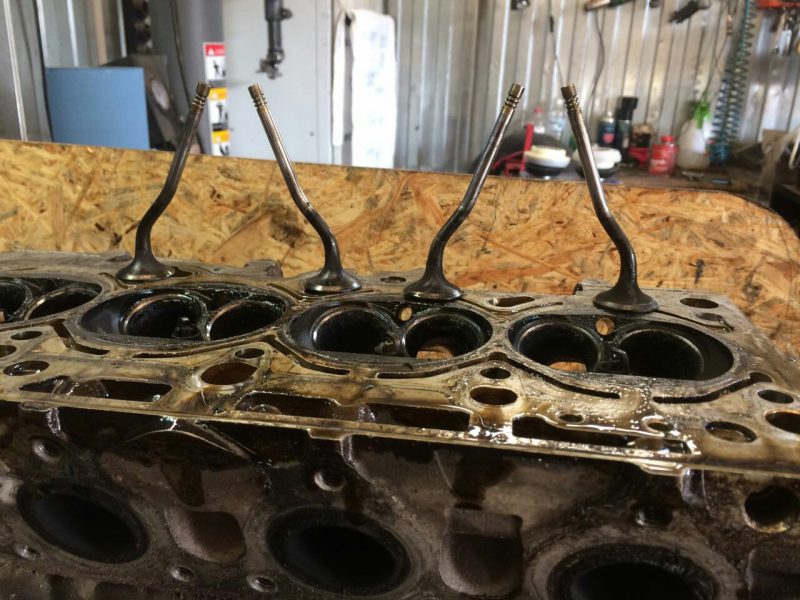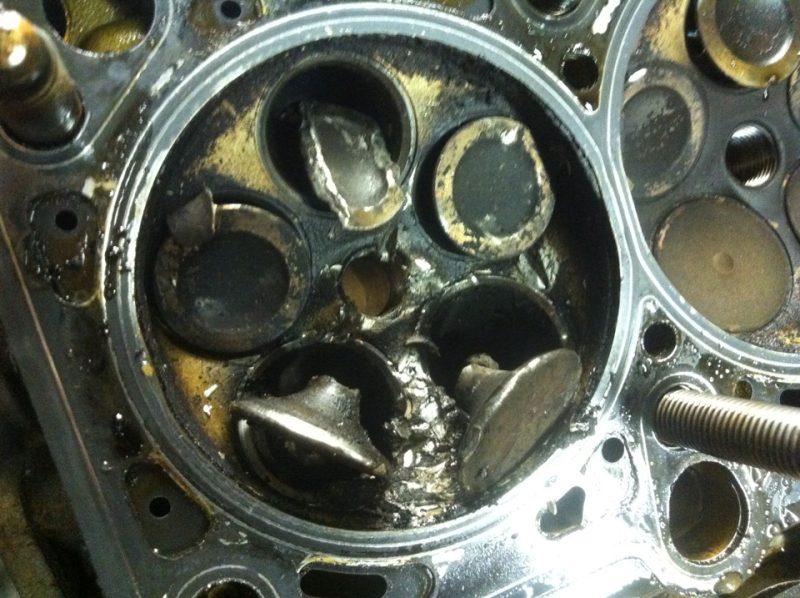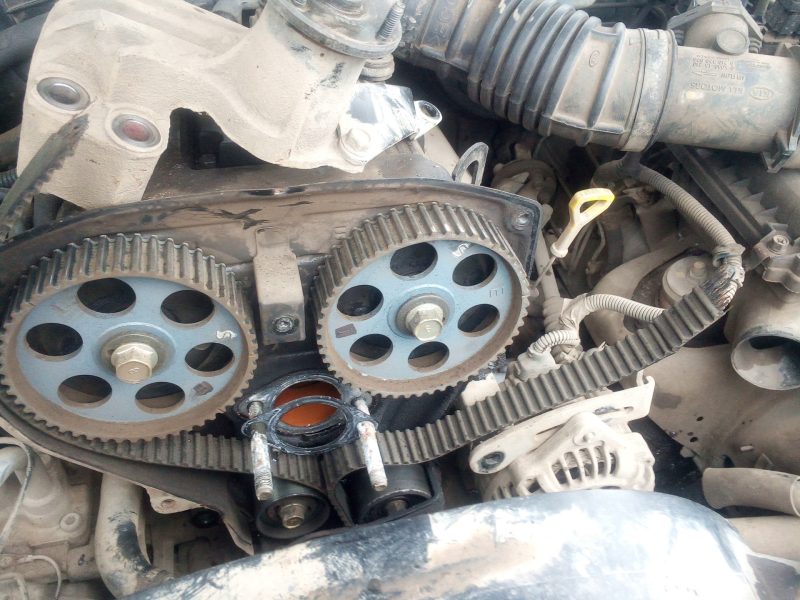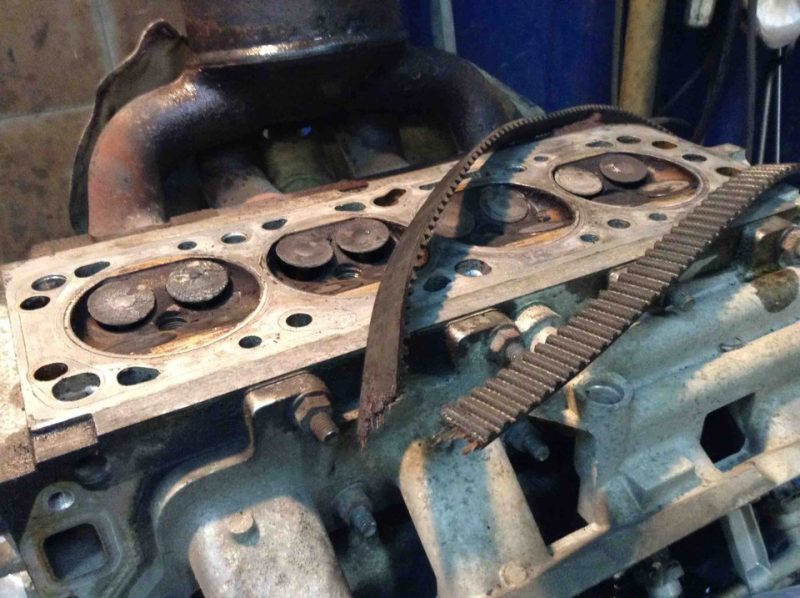It is necessary to change the belt, otherwise it will bend the valves – this warning can often be heard by car owners during a visit to the service. And it is not just a scarecrow. The outcome of problems with the belt in the form of repair of the cylinder head, or even the entire engine, is quite likely. Let’s analyze the mechanics of the process: how and why valves bend when the timing belt breaks and whether there are motors in which no destruction occurs when the belt breaks.
The principle of operation of the timing belt
Synchronization of the movement of the timing components is important for the correct and efficient operation of the engine. We have already told you how the timing mechanism is organized. Here we will only touch on the basics.
The valves are mounted in the cylinder head. There are at least two of them for each cylinder, although now there are often even more. One is responsible for supplying air to the combustion chamber, and the second valve discharges exhaust gases.
The valves work in a certain order, which is controlled in the cylinder head by the camshaft, which is connected by a drive to the crankshaft. The latter, already in the cylinder block, is connected to the pistons via connecting rods.
As the piston moves to the bottom of the cylinder, the valve lets in air or fuel mixture. As the piston moves upward, the valve closes, pressurizing the combustion chamber. The spark plug ignites the mixture, and the explosion pushes the piston down again. The exhaust valve is also triggered, venting the gases. Thus, the valves must open and close, strictly corresponding to the current engine stroke.
For synchronization of work of pistons and valves just and is responsible for the belt or (depending on the engine design) timing chain. The latter is more reliable and does not require frequent replacement. However, the timing belt is also widespread. We have already talked about the pros and cons of each of the options.
Why valves bend
With any type of drive, there may come a moment when the belt or chain transmission fails. Worn belts will tear without timely replacement. A stuck coolant pump (pump) bearing can lead to the same result.

The chain is a little easier, because it is not expected to break soon. And the valves on “chain” motors bend much less often. Chain links are pulled out gradually, that along with the tensioner failure can be determined in advance by the characteristic sound of the engine.
Why do the valves bend when the belt breaks? The camshaft, having lost its drive, stops rotating abruptly. The valves stop going up and down, while the crankshaft continues to rotate, driving the pistons.
The open valve recessed in the cylinder cavity is struck by the piston, which hits the valve plate, causing the valve stem to bend and sometimes break.
Then there is a complete stoppage of the engine. What to do if the valves are bent? The main thing is not to try to start the engine again, so as not to provoke a more serious breakdown. After all, cranking the crankshaft will force the pistons a few more times to pass over the valves frozen in the ajar position.
How to determine that the valves are bent
So, if the engine with belt-driven timing stalled on an even place, do not rush to restart it. Do not be lazy to open the hood and check the integrity of the timing belt. And if you still turned the starter by inertia, you can suspect the timing belt breakage by unusually fast, “idle”, rotation of the crankshaft.
If the timing belt is torn, cranking the starter is disastrous – you may cause even more serious damage. Call a tow truck, because you will have to go to the service in any case.
To determine by eye whether the valves are bent or not, alas, will not work. To diagnose the diagnosis will have to carry out two simple manipulations. On the rollers on the marks you need to install a new belt and manually turn the crankshaft.

Understand that the valves are strongly bent, you can already after a couple of revolutions. Rotation will be difficult. When the valve stems are intact or almost intact, the crankshaft can turn freely. A more accurate diagnosis will give a measurement of compression. If there is no compression in the cylinder, the valves are bent and therefore leaky.
Guess about deformation of 1-2 valves can be guessed by the uneven operation of the engine after replacing the timing belt. The engine will “throb”, and its unstable operation may be accompanied by ringing.
Bent valves: what to do in this case
In this case, there is no alternative to removing and disassembling the cylinder head. To begin with, it is necessary to conduct a thorough defect analysis of all parts of the cylinder head, including the camshaft. The consequences of the impact can be different.
One is lucky – it is enough just to replace the bent valves. Others have to rebuild not only the cylinder-head, but also the whole engine. And in the most neglected cases it is necessary to change the engine at all.
Only by removing the cylinder-head, you can assess the degree of damage. It is good if the pistons have escaped damage – it remains only to replace the bent valves and their guides (plus, of course, you will need new gaskets, oil seals, oil caps).
Traces of impact on the piston – a direct reason to disassemble the cylinder block, check the connecting rods and liners. In any case, all damaged parts will have to be replaced with new ones.
How to prevent the breakage of the timing belt
To save the car from unplanned repairs associated with the breakage of the timing belt and, as a consequence, with the bending of valves, it is possible only with the help of prevention. Let us try to formulate a few basic points.

- The service manual of each model specifies the service life of the timing belt. On foreign cars it is usually 80-120 thousand kilometers of mileage. Domestic models have a little less. In any case, the condition of the belt should be regularly monitored and replaced at the slightest doubt.
- The reason for replacement should be loss of integrity (chipped teeth or edges), cracking and loss of elasticity. In our climate, belts often outlive their life before the specified period.
- Do not try to save money by installing a non-original product. There are cases when counterfeit belt did not work and 10 thousand kilometers of mileage.
- To avoid jamming the coolant pump bearing, which can also provoke destruction and subsequent breakage of the timing belt, it is especially necessary to look after the pump. It wears out at approximately the same mileage as the belt. Therefore, many people when replacing the drive also change the water pump.
- Wear of the camshaft – as a cause of timing belt breakage – is not often encountered. However, at high mileage its jamming with belt breakage is a real scenario. Conclusion: check the condition of the camshaft, for example, when buying a used car.
As for chain-driven motors, they are more reliable than their belt-driven counterparts. Nevertheless, sometimes the valves bend on them as well. As a rule, due to critical stretching of the chain and its jumping over the sprockets. In this case, the cause may be the materials from which the chain links are made, the wear of the tensioner or simply irresponsible attitude of the owner to his engine. And the prevention is the same – control of the chain and its tension.
Which motors do not bend valves
Often among the advantages of this or that modification of the car indicate that the engine at the breakage of the belt does not bend the valves. This is partly true: not all motors by virtue of their design are prone to this.
It is not difficult to find special summary tables of modifications of units willingly bending valves, as well as those in which such catastrophe does not occur.

There are good engines of almost all manufacturers, as well as suicidal motors. In any case, it is important to remember that the chain drive does not give a hundred percent guarantee against valve bending.
We would not trust “black” and “white” lists unconditionally. To understand whether the valves will bend when the timing belt breaks, with an accuracy of 100 percent is not possible. In practice, there are known cases that refute the rules. So control and regular maintenance of the timing drive should not be ignored in any case.
In conclusion, we will remind about one of the ways to avoid bending valves with the help of tuning. For the engines of some manufacturers produced refined pistons with special recesses on the heads. Notches on the piston in diameter and depth correspond to the valve plate and the depth of its opening. And in case of belt breakage or chain slip, there is no hard contact between the piston and the valve.
However, such pistons have a side effect: such notches reduce the compression ratio of the engine and therefore take away up to 7% of the engine power. Therefore, not everyone is ready to make such a sacrifice for the sake of hypothetical safety of valves.
Summary
- Valves are the most important element of the timing mechanism, for the synchronization of their work with the pistons is responsible for the timing drive – toothed belt or chain.
- The main cause of valve bending is the breakage of the timing belt. In this case, still moving in the upper point of the pistons hit the valves lowered into the combustion chamber.
- Determine whether the valves are bent, can be determined by the lack of compression in the cylinder.
- The result of bent valves will be at least defectovka and reassembly of the cylinder head, and in severe cases – and the entire engine.
- Avoid bent valves can be preventive measures, timely renewing the timing belt, not waiting for its critical wear.
